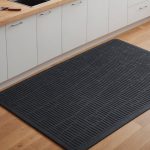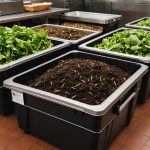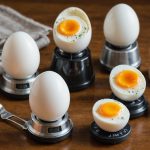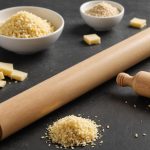Selecting the right materials for a non-slip kitchen mat can make all the difference in safety and style. From innovative rubber compositions to absorbent fabrics, the options available suit various needs and aesthetics. Understanding how each material performs in different conditions helps you choose one that complements your kitchen while prioritizing safety. Explore the ideal materials that will not only enhance your kitchen's functionality but also provide a stylish touch. Your perfect non-slip mat awaits!
Overview of Non-Slip Kitchen Mats
Ensuring safety and style in your kitchen space.
Also to see : Choosing the Ideal Egg Timer for Perfectly Cooked Soft-Boiled Eggs: A Comprehensive Guide
Importance of Non-Slip Kitchen Mats
Non-slip kitchen mats are essential for maintaining a safe environment in one of the most frequently used areas of the home. Slips and falls can happen easily, particularly in kitchens where the floor may become wet or greasy. Non-slip kitchen mats provide a stable surface, reducing the risk of accidents. They are especially beneficial for families with young children or elderly members.
Overview of Common Materials Used in Kitchen Mats
The materials used in kitchen mats play a crucial role in their effectiveness and durability. Common materials include rubber, which offers excellent grip and is easy to clean. Foam mats provide comfort for long periods of standing, while vinyl mats are known for their water-resistant properties. Each material has its benefits, making it important to choose based on your specific needs.
Topic to read : Discover the Best Materials for Ultra Non-Stick Roasting Pans: Your Ultimate Guide
Aesthetic Considerations
While safety is paramount, the aesthetic appeal of a kitchen mat should not be overlooked. These mats come in various colors, patterns, and textures, allowing you to complement your kitchen's decor. Selecting a mat that blends well with your kitchen's style can enhance the overall look while ensuring safety.
Non-slip kitchen mats are a practical and stylish addition to any kitchen, offering both safety and aesthetic value.
Material Comparisons
Exploring the materials for optimal kitchen safety and style.
Rubber Mats
Rubber kitchen mats are renowned for their durability and excellent grip, making them a top choice for safety-conscious homeowners. The properties and benefits of rubber include its resistance to water and easy maintenance. These mats can be quickly wiped clean, making them ideal for kitchens where spills are frequent.
However, there are drawbacks and maintenance considerations to keep in mind. Rubber mats can sometimes emit an odor, especially when new, and may require ventilation. Additionally, they can be heavier, making them less convenient to move around.
In terms of ideal usage scenarios, rubber mats are perfect for high-traffic areas or places prone to moisture, such as near sinks or stoves. Their robust nature ensures they remain in place, reducing the risk of slips and falls.
When selecting a mat, consider these factors to align with your kitchen's specific needs. Rubber mats offer both functionality and peace of mind, ensuring a safer environment for all household members.
- Pros: Durable, water-resistant, easy to clean
- Cons: Potential odor, heavy
- Best Use: High-traffic, moisture-prone areas
Thickness and Texture Considerations
Enhancing comfort and safety in your kitchen space.
Importance of Thickness for Comfort and Safety
The thickness of a kitchen mat significantly affects both comfort and safety. A thicker mat provides more cushioning, which is essential for those who spend extended periods standing in the kitchen. This added comfort can reduce fatigue and prevent joint pain. However, it's crucial to balance thickness with stability; too thick a mat may pose a tripping hazard.
Different Textures and Their Impact on Grip
The texture of a kitchen mat is equally important, influencing its grip and slip resistance. Mats with a rough texture tend to have better grip, reducing the risk of slipping on wet or greasy floors. Consider mats with a textured surface for areas prone to spills.
Recommendations for Various Kitchen Settings
When selecting a kitchen mat, consider both thickness and texture based on your kitchen's specific needs. For high-traffic areas, choose a mat with a moderate thickness and a textured surface for optimal safety and comfort. In less busy areas, a thinner mat with a sleek texture might suffice.
- Thicker Mats: Ideal for prolonged standing
- Textured Mats: Best for slip-prone areas
- Thin Mats: Suitable for low-traffic zones
Choosing the right combination ensures a safe and comfortable kitchen environment.
Aesthetic Choices and Design Options
Exploring the intersection of style and functionality in kitchen spaces.
Popular Design Trends in Kitchen Mats
Incorporating the latest kitchen mat design trends can enhance both the aesthetic appeal and functionality of your space. Current trends emphasize bold patterns and textures that make a statement while complementing existing decor. Geometric shapes and vibrant colors are particularly popular, offering a modern touch to traditional kitchens.
How to Choose Colors That Complement Your Kitchen Decor
Selecting the right color for your kitchen mat requires careful consideration of your overall kitchen palette. Neutral tones such as gray, beige, and white can seamlessly blend with various styles, providing a subtle backdrop. For a more striking effect, consider contrasting colors that highlight specific elements of your kitchen, such as cabinetry or countertops.
Balancing Aesthetics with Functionality
When choosing a kitchen mat design, it's essential to balance aesthetics with practicality. Opt for materials and textures that not only look good but also offer durability and slip resistance. This ensures your kitchen mat remains a functional part of your home while enhancing its visual appeal.
- Bold Patterns: Add personality and style
- Neutral Colors: Blend effortlessly with decor
- Contrasting Colors: Highlight key kitchen features
By considering these factors, you can select a kitchen mat design that offers both beauty and utility.
User Reviews and Recommendations
Discover insights from real users and find the best non-slip kitchen mats.
Summary of Popular Non-Slip Kitchen Mats
Non-slip kitchen mat reviews reveal a variety of preferences and experiences. Many users praise mats with a rubber base for their exceptional grip and durability. Foam mats are often highlighted for comfort, especially for those who stand for extended periods. Users appreciate vinyl mats for their water-resistant properties, making them a top choice in spill-prone areas.
Highlighting Top-Rated Products and Their Features
When it comes to the best-rated mats, certain products consistently receive high marks. Features such as thickness for added comfort and textured surfaces for enhanced grip are frequently mentioned in reviews. Here are some notable features:
- Durability: Ensures long-lasting use
- Water Resistance: Ideal for wet areas
- Comfort: Reduces fatigue from prolonged standing
Importance of Reading User Feedback Before Purchasing
Reading user experiences can provide invaluable insights before making a purchase. Feedback often highlights practical aspects that may not be immediately obvious, such as ease of cleaning or potential odors. By considering these reviews, you can make an informed decision and select a non-slip kitchen mat that best suits your needs.
Maintenance and Cleaning Tips
Ensuring longevity and cleanliness of your kitchen mats.
Best Practices for Cleaning Different Types of Kitchen Mats
Proper kitchen mat care is essential for maintaining their functionality and appearance. For rubber mats, regularly wipe with a damp cloth and mild detergent to remove spills and stains. Foam mats benefit from vacuuming to remove debris, followed by spot cleaning with a gentle cleaner. Vinyl mats can be cleaned with a mixture of water and vinegar for a fresh, odor-free surface.
Recommended Cleaning Products and Methods
Choosing the right cleaning products can significantly impact cleaning non-slip mats. Opt for non-abrasive cleaners to avoid damaging the mat's surface. A simple solution of warm water and dish soap is effective for most materials. For tougher stains, a soft-bristle brush can be used to gently scrub without harming the mat.
Tips for Prolonging the Life of Non-Slip Kitchen Mats
To extend the life of your non-slip kitchen mats, follow these maintenance tips:
- Rotate mats regularly to ensure even wear.
- Avoid direct sunlight to prevent fading.
- Store mats flat or rolled to maintain shape.
Adhering to these maintenance tips ensures your kitchen mats remain safe, clean, and aesthetically pleasing for years to come.











